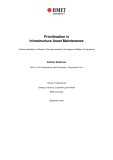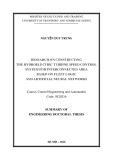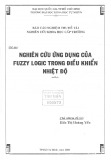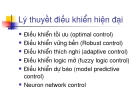
ISSN: 2615-9740
JOURNAL OF TECHNICAL EDUCATION SCIENCE
Ho Chi Minh City University of Technology and Education
Website: https://jte.edu.vn
Email: jte@hcmute.edu.vn
JTE, Volume 19, Issue 06, 2024
45
The Controller Improves Voltage Quality In Microgrids
Xuan Hoa Thi Pham , Hien-Thanh Le*
Ho Chi Minh City University of Industry and Trade, Vietnam
*Corresponding author. Email: hienlt@huit.edu.vn
ARTICLE INFO
ABSTRACT
Received:
24/05/2024
The inverters in the microgrid are connected in parallel to improve efficiency.
When the Microgrid is operating in standalone mode, the inverters must be
controlled to share their power to stabilize the frequency and voltage. The
droop control method is one of the most popular power-sharing methods
today, some studies have presented traditional and improved droop control
methods. However, the purpose of the studies is power-sharing for the
inverters that no purpose of reducing the voltage and frequency deviation to
improve power quality. This paper presents a voltage and frequency
adjustment method based on fuzzy logic to minimize voltage and frequency
deviation to improve power quality in microgrids. This controller includes a
Droop controller combined with fuzzy logic, the fuzzy logic block will
control to change in the slope of the Droop characteristic curve when the load
changes. The purpose of the proposed method is to improve the accuracy of
power-sharing for inverters and at the same time minimize voltage and
frequency deviations in microgrids. Simulation results will prove the
effectiveness of the proposed method.
Revised:
20/09/2024
Accepted:
07/10/2024
Published:
28/12/2024
KEYWORDS
Power sharing;
Microgrid control;
Parallel inverter;
Fuzzy logic;
Non-linear load.
Doi: https://doi.org/10.54644/jte.2024.1602
Copyright © JTE. This is an open access article distributed under the terms and conditions of the Creative Commons Attribution-NonCommercial 4.0
International License which permits unrestricted use, distribution, and reproduction in any medium for non-commercial purpose, provided the original work is
properly cited.
1. Introduction
The microgrid includes a system of distributed generation (DG) sources, which uses renewable
energy sources such as solar energy, wind energy and storage. However, in stand-alone mode, the
microgrid must have power sh`aring between inverters connected in parallel to maintain voltage and
frequency stability.
Fig. 1. The microgrid consists of several inverters connected in parallel coupling (PCC)
Bus DC
Line
impedance 1
Inverter 1
Bus DC
Line
impedance 2
Inverter 2
Bus DC
Line
impedance n
Inverter n
Point of Common
Coupling (PCC)





































